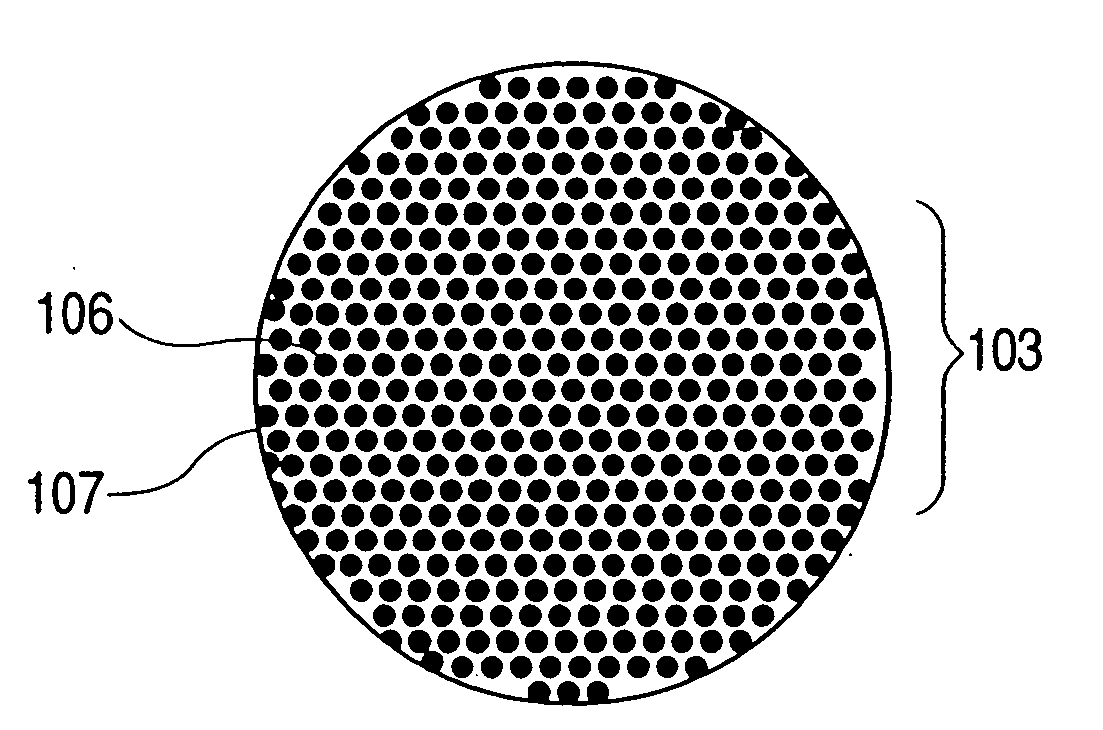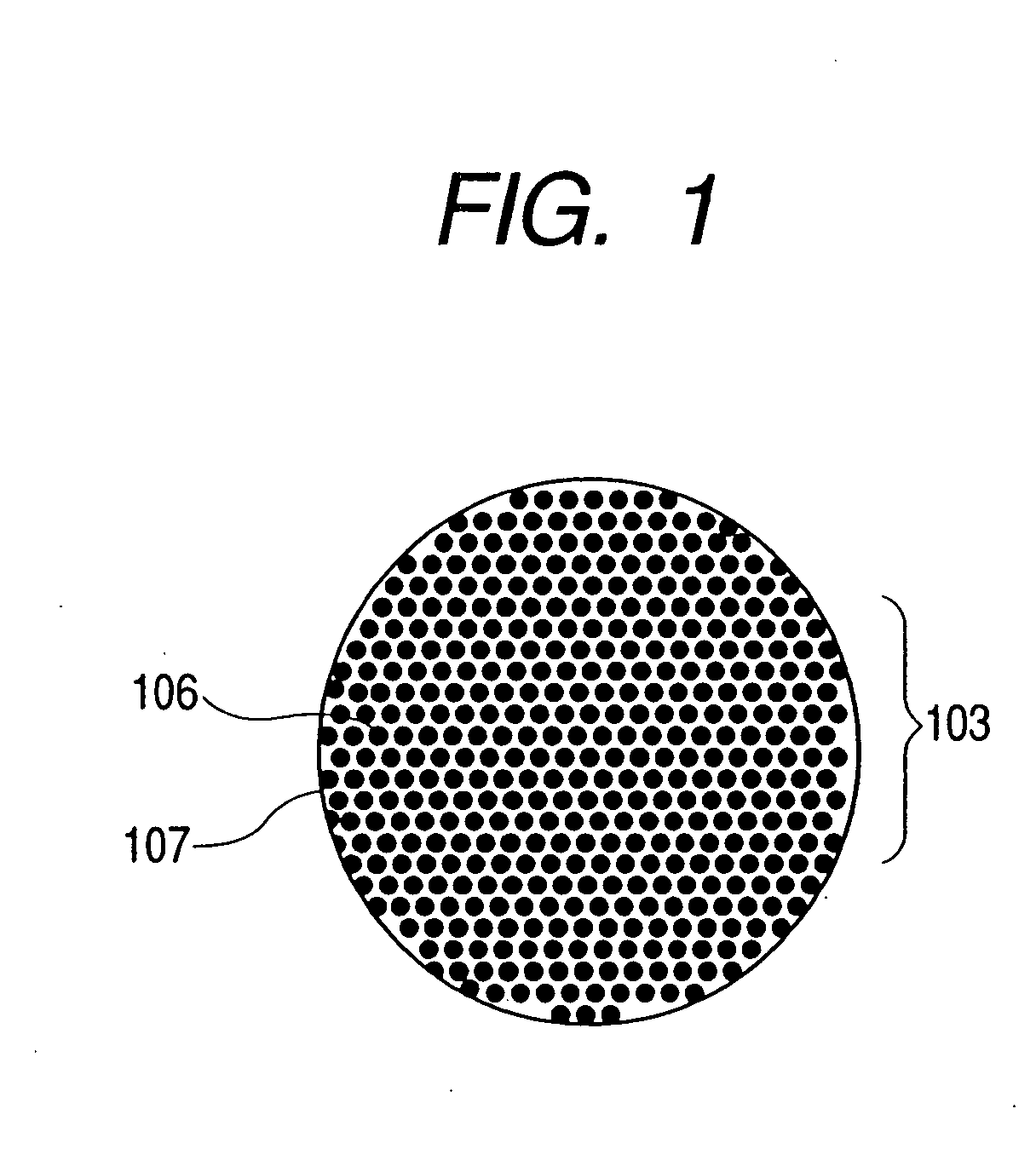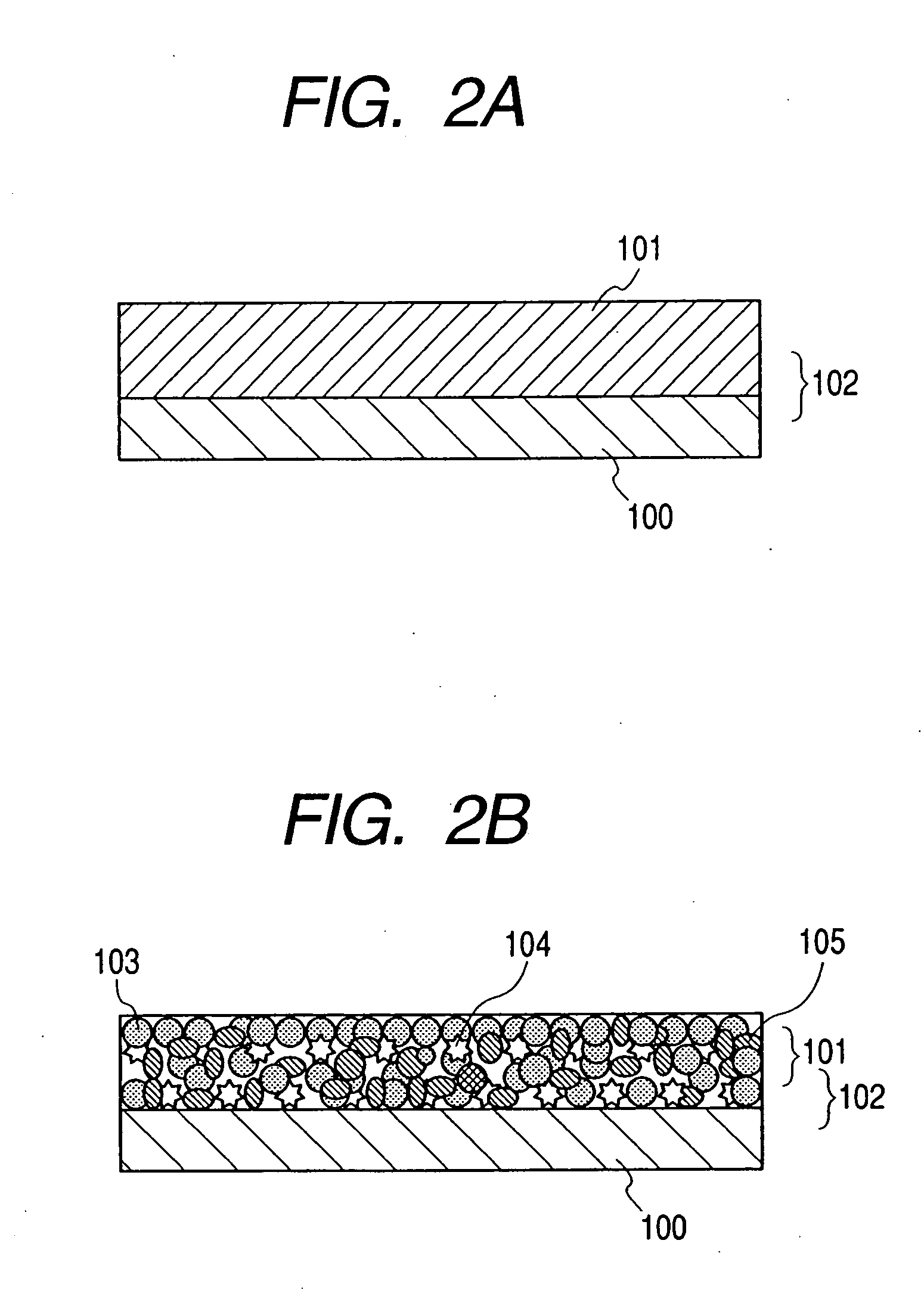Electrode material for lithium secondary battery, electrode structure comprising the electrode material and secondary battery comprising the electrode structure
- Summary
- Abstract
- Description
- Claims
- Application Information
AI Technical Summary
Benefits of technology
Problems solved by technology
Method used
Image
Examples
example 1
[0113] 65% by weight of Si, 30% by weight of Sn and 5% by weight of Cu were melted and mixed to make an alloy, which was subjected to water atomization to prepared a Si—Sn—Cu alloy powder having an average particle diameter of 10 μm. Next, the prepared alloy powder was ground with a bead mill (ball mill using beads with comparatively small diameter as grinding media) to obtain a Si—Sn—Cu alloy fine powder. This grinding was performed using zirconia beads in isopropyl alcohol.
[0114] Then, processing for 2 hours in a high-energy planetary-type ball mill in an argon gas atmosphere using balls made of silicon nitride provided an electrode material of Si—Sn—Cu alloy fine powder.
example 2
[0115] An electrode material of a Si—Zn—Cu alloy fine powder was obtained following the same procedure as Example 1 with the exception that an alloy with a composition of 70% by weight of Si, 25% by weight of Zn and 5% by weight of Cu was prepared by a gas atomization process using nitrogen gas.
example 3
[0116] An electrode material of a Si—Sn—Co alloy fine powder was obtained following the same procedure as Example 1 with the exception that an alloy with a composition of 50% by weight of Si, 40% by weight of Sn and 10% by weight of Co was prepared by a water atomization process.
PUM
 Login to View More
Login to View More Abstract
Description
Claims
Application Information
 Login to View More
Login to View More - R&D
- Intellectual Property
- Life Sciences
- Materials
- Tech Scout
- Unparalleled Data Quality
- Higher Quality Content
- 60% Fewer Hallucinations
Browse by: Latest US Patents, China's latest patents, Technical Efficacy Thesaurus, Application Domain, Technology Topic, Popular Technical Reports.
© 2025 PatSnap. All rights reserved.Legal|Privacy policy|Modern Slavery Act Transparency Statement|Sitemap|About US| Contact US: help@patsnap.com



